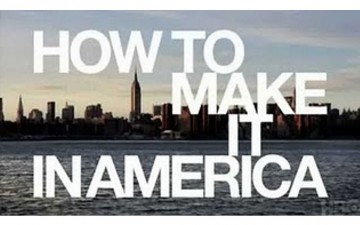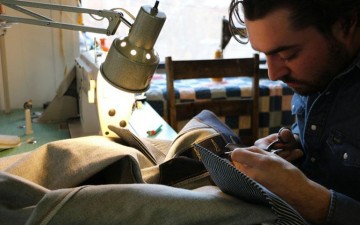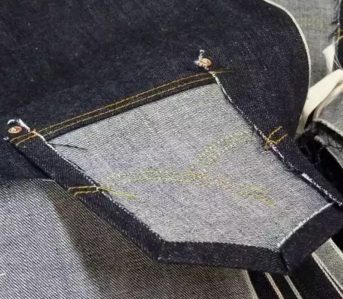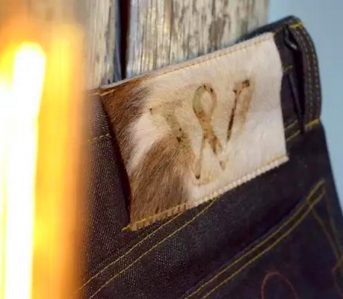Creative types have used the crowd-funding site Kickstarter to raise money for everything from independent films, art projects, and video games to men’s clothing labels. Anyone with an idea and a webcam can make their case to the internet as to why they deserve money to make it happen. If users pledge enough to meet the funding goal, the creator gets the cash and the investors get a “reward” based on how much they pledged.
For clothing labels, this usually entails buying a garment well in advance of it being made. But you don’t exactly buy a pair of jeans. You reserve a pair in the hope that one day the brand will be able to make them. Despite the unlimited possibilities this could afford up and coming designers, the offerings thus far have been brain-meltingly dull.
The hopeful promise of the digital age was that increased access to consumers and the means of production would allow previously disenfranchised designers, journalists, artists, etc. to compete against major corporations. To a large part that’s proven true in the menswear world.
Brands like Rogue Territory, Temple of Jawnz/John Coppidge, and 3sixteen represent a new wave of labels that have achieved success and recognition by using the internet to do it all themselves: making their own pieces, selling primarily on their own eshops, and communicating and advertising directly to their customers via social media sites and fashion message boards. These guys worked like dogs to develop their lines, build their reputation, and earn their accounts.
Selling direct to consumer on Kickstarter may make it easier for an aspiring designer to get some attention, but the flipside of removing the middlemen — the standing arbiters of taste — is that it’s nearly impossible to tell the signal from the noise.
Without that filter, many Kickstarter hucksters are just modern snake-oil salesmen, stringing together as many generic menswear tropes as possible in two minutes or less and you have to decide — product unseen and unmade — if they deserve your money. On the rare chance that a Kickstarter brand actually has an interesting product or story to share, it’s often overshadowed by swipes at overseas manufacturing or half-baked brand ideology:
We’re cutting out the middleman so we can take the same high-end garment found in an exclusive boutique and deliver it to you wholesale, right to your doorstep, for a third of the price. It’s made in the USA to the same high standards and with the same great materials in a classic yet modern fit that’s slim, but not too slim. Plus it’s built to last so you can wear it for years to come!
Sound familiar?
In an arena where failure has almost no consequence, designers shouldn’t be so generic, safe, and boring. Almost every brand is making (or promising to make) omnipresent staples like jeans, sweatshirts, oxford cloth button downs, and t-shirts — and the pitches all follow a similar semi-jingoistic script.
That’s the problem, these companies aren’t trying to make clothes, they’re trying to build brands around a two minute video regardless of whatever product they happen to be hocking.
This isn’t to say throw out the Kickstarter model, just change the way it’s being used: Brands shouldn’t live and die on Kickstarter, pieces should.
Last month for example, Temple of Jawnz wanted to release a new version of its leather daypack but it took a couple months of pre-sale to gauge if there was enough interest to go into production. The whole process was a black box until they posted on their Tumblr that they had enough orders to do it. Kickstarter could have added transparency — and possibly a lot more orders — to that whole process.
In TOJ‘s recent farewell message, Drew Keith even broaches the idea that in the future they “could start a Kickstarter and offer tangible TOJ item rewards at the same price they’d normally sell for here [on the TOJ website].” That’s exactly what the site needs.
There are many hurdles existing brands would admittedly face before moving forward: internet brands often thrive off of their aloof mystique, they would lose a percentage of the funds raised to the site, and for the reasons discussed above Kickstarter products have the stigma of being lame.
I hope that crowd-sourced fashion will one day be an experimental place where known designers can throw out their craziest hypothetical creations and see what sticks. Kickstarter would allow them to broach such creative risks without risking loads of money if it fails. I want to see established labels market things so insane they have to be bought before production.
Until that time comes, though, here’s something that should add some excitement to even the most generic of pitch videos.
What do you think about Kickstarter?






